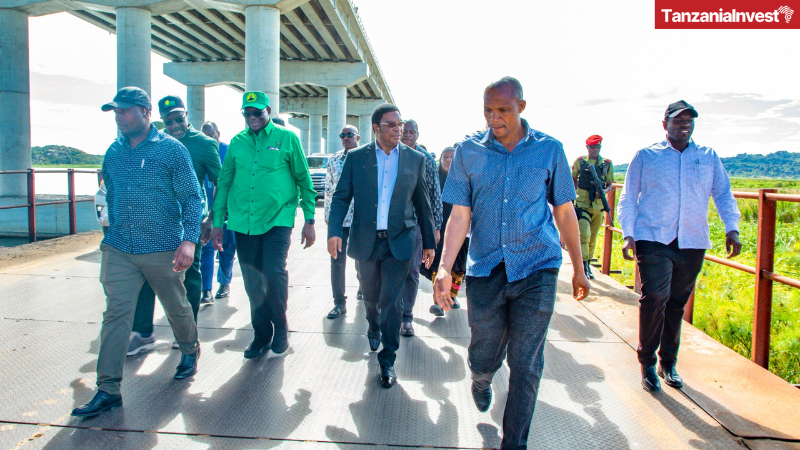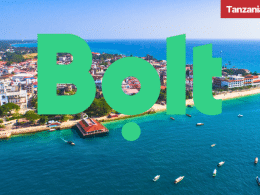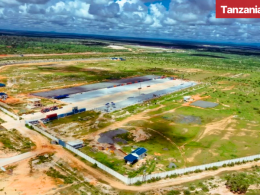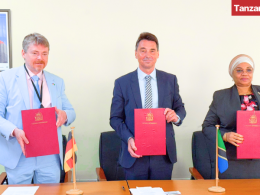Tanzania has completed the construction of the JP Magufuli Bridge (Kigongo–Busisi) and is set to be inaugurated by Tanzania’s President Samia Suluhu Hassan on 19th June 2025.
This statement was made on 19th May 2025 by Tanzania’s Prime Minister Kassim Majaliwa during an inspection visit to the bridge.
The JP Magufuli bridge is the longest in East and Central Africa, spanning 3 kilometers across Lake Victoria, with 1.66 kilometers of connecting roads, linking the Kigongo and Busisi towns in the Mwanza Region.
The bridge is designed to carry 160 tonnes and will have a lifespan of over 100 years. Named after the late President John Pombe Magufuli, it is expected to enhance transport efficiency in the Lake Zone by eliminating ferry delays and facilitating smoother movement of people and goods.
Speaking during the visit, Tanzania’s Minister of Works Abdallah Ulega stated that the bridge was constructed using funds provided by the Government of Tanzania, describing the project as a historic national achievement.
He noted that more than TZS 700 billion was invested in the bridge’s construction.
Ulega also assured residents of Sengerema District that the government will continue to upgrade critical infrastructure, including the 54.5 kilometers Sengerema–Nyehunge road and the 32 kilometers Kamanga–Sengerema road to tarmac standard, to improve accessibility and stimulate local economic development.
During a previous visit, the Acting Chief Executive of the Tanzania National Roads Agency (TANROADS), Engineer Doroth Mtenga, stated that the completion of the bridge marks a social and economic liberation for the Lake Victoria corridor.
Mtenga explained that it will easily link the road from Sirari–Usagara–Geita–Bukoba to Mutukula and connect it to neighboring countries—Uganda, Rwanda, and Burundi—through an efficient route, hence increasing the income of people in the Lake Zone and the nation as a whole.
The JP Magufuli (Kigongo–Busisi) Bridge construction began in December 2019 by the China Civil Engineering Construction Corporation (CCECC) in collaboration with the China Railway 15 Bureau Group Corporation (CR15G JV).
The bridge has a width of 28.45 meters, which includes two carriageways, each 7.0 meters wide for vehicles, with 2.5-meter-wide emergency lanes on each side.
It also features 2.5-meter walkways on both sides, 2.45-meter medians separating traffic directions, 0.5-meter guardrails for vehicles, and 0.5-meter handrails for pedestrians.
The 180-tonne capacity bridge will allow 1,600 vehicles to pass at a time and represents an alternative to the current ferry connecting the shores, reducing transport time and facilitating regional trade.










